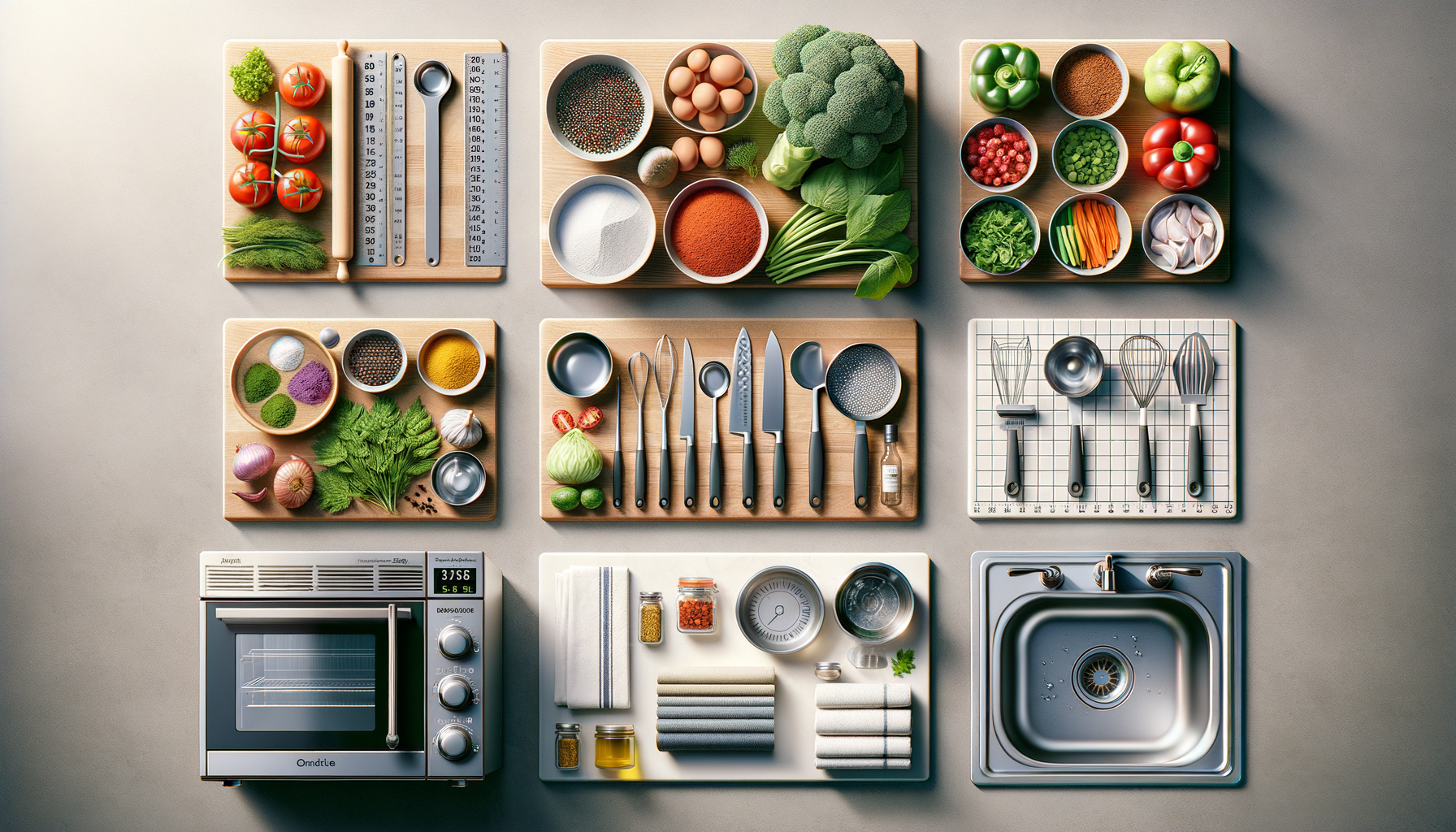
Beginner Cooking? Start With These 5 Fundamentals From Culinary School
Introduction to Cooking Fundamentals
Cooking is not just about following recipes; it’s an art and a science that requires understanding and practice. For beginners, stepping into the kitchen can be overwhelming, but mastering a few fundamental skills can make the process much smoother. This article delves into five essential cooking tips that can transform your culinary experience. These tips, drawn from the basics taught in culinary schools, are simple, repeatable, and practical—making everyday cooking easier and more enjoyable.
Mastering Knife Skills
One of the first lessons in any culinary school is mastering knife skills. Proper knife techniques not only ensure safety but also improve the efficiency and precision of your cooking. Start by learning how to hold a knife correctly; your grip should be firm but relaxed, with your fingers curled under to protect them from the blade.
Practicing different cuts such as dicing, julienning, and chopping can make a significant difference in how your dishes turn out. For instance, uniform cuts ensure even cooking, which is crucial for achieving the desired texture and flavor. Regular practice is key to becoming proficient, and over time, you’ll find that your confidence in handling a knife increases.
Here are some tips to enhance your knife skills:
- Invest in a high-quality chef’s knife suitable for most tasks.
- Keep your knives sharp; a dull knife is more dangerous than a sharp one.
- Practice regularly to build muscle memory and improve speed.
By honing these skills, you’ll not only improve your cooking efficiency but also elevate the presentation of your dishes, making them more appealing.
Understanding Flavor Profiles
Understanding flavor profiles is crucial in creating delicious and balanced dishes. A flavor profile is the combination of flavors that make up the taste of a dish, including sweet, salty, sour, bitter, and umami. Recognizing how these flavors interact can help you create dishes that are both complex and harmonious.
Experimenting with different herbs, spices, and condiments can help you develop a keen sense of taste. For example, adding a splash of vinegar or a squeeze of lemon can brighten up a dish, while a pinch of salt can enhance the existing flavors. It’s important to taste as you cook and adjust the seasoning accordingly.
Consider these tips to refine your understanding of flavor profiles:
- Start with simple recipes and gradually incorporate more complex flavors.
- Keep a journal of your cooking experiments to track what works and what doesn’t.
- Learn about different cuisines and how they balance flavors uniquely.
By mastering flavor profiles, you’ll be able to create dishes that not only taste great but also offer a memorable culinary experience.
The Importance of Mise en Place
Mise en place is a French culinary phrase that means „everything in its place.“ It refers to the practice of preparing and organizing all ingredients before cooking. This technique is foundational in professional kitchens and is equally beneficial for home cooks.
By having all your ingredients measured, chopped, and ready to go, you can focus on the cooking process without interruptions. This not only saves time but also reduces stress and minimizes the risk of mistakes. Imagine trying to chop vegetables while your onions are burning on the stove; mise en place helps prevent such scenarios.
Here’s how you can implement mise en place in your kitchen:
- Read through the entire recipe before starting to ensure you have all necessary ingredients.
- Prepare ingredients in the order they will be used.
- Use small bowls or containers to keep ingredients organized and within reach.
Adopting this habit will streamline your cooking process, making it more efficient and enjoyable.
Embracing the Art of Seasoning
Seasoning is an art that can elevate a dish from ordinary to extraordinary. It involves more than just adding salt and pepper; it’s about bringing out the natural flavors of the ingredients and creating a balanced taste.
Salt is a flavor enhancer, but it should be used judiciously. Too much can overpower a dish, while too little can leave it bland. Pepper adds a subtle heat and complexity, but it’s not the only spice to consider. Herbs, spices, and even acidic elements like lemon juice or vinegar can add depth and brightness to your dishes.
To master the art of seasoning, consider these strategies:
- Taste as you cook and adjust the seasoning gradually.
- Understand the role of each seasoning element in your dish.
- Experiment with different herbs and spices to discover new flavor combinations.
By embracing the art of seasoning, you’ll develop a deeper appreciation for the nuances of flavor, enhancing your cooking skills and delighting your palate.
Conclusion: Building Confidence in the Kitchen
Cooking is a journey that evolves with practice, patience, and a willingness to learn. By mastering these fundamental skills—knife techniques, understanding flavor profiles, practicing mise en place, and embracing seasoning—you’ll build a strong foundation for your culinary endeavors. These tips are designed to be simple, repeatable, and practical, providing you with the tools to make everyday cooking easier and more enjoyable. As you gain confidence in the kitchen, you’ll find yourself more willing to experiment and explore new recipes, ultimately making cooking a rewarding and fulfilling experience.